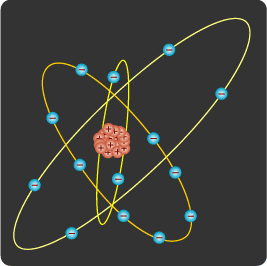|
|
The Standard Model shows that
each of the W, Z and Higgs bosons has the following theoretical
properties:
-
The particle's Lagrangian density has a quadratic mass term of the form
m2ΦΦ,
where m denotes the mass of the corresponding particle
and Φ denotes its field function. (Here indices and complex attributes
of the field functions are omitted.)
-
The mass term is free of derivatives.
-
Therefore, the corresponding Hamiltonian density contains the same
mass term but with an opposite sign.
It is well known that the Hamiltonian density is the
T00 component of the energy-momentum tensor.
The fundamental equation of General Relativity takes the following form
(see [1], p. 297)
Rμν
- 1⁄2gμνR =
κTμν,
where Rμν and R are appropriate contractions
of the curvature tensor, gμν is the metric tensor,
Tμν is the overall matter and fields
energy-momentum tensor and κ is a constant.
It is well known that the classical energy-momentum tensor of matter as
well as that of a Dirac particle depends linearly on mass, whereas
it is shown above that the Standard Model interpretation of
each of the W, Z and Higgs bosons
has an energy-momentum tensor that depends quadratically on mass.
It follows that if the Standard Model is correct then
the W, Z and the Higgs bosons carry a kind of
mass which is different from ordinary matter.
The following argument indicates the compatibility of the Dirac equation
with the required expression of the energy-momentum tensor. General
Relativity is a classical theory. Now, the Schroedinger equation is
the fundamental equation of non-relativistic quantum mechanics.
Furthermore, this equation is the non-relativistic limit of the Dirac
equation. It is also well known that Newtonian mechanics is the classical
limit of quantum mechanics. By taking these limits on finds the
compatibility of the Dirac theory with General Relativity.
This procedure does not work for the Standard Model
interpretation of the W, Z and Higgs bosons.
Indeed, the aforementioned limits are continuous processes. Therefore,
the second power of the mass term of the
Standard Model equations of these bosons
cannot jump and become a first power. It follows that these equations
are inconsistent with the linear mass dependence of the
classical energy-momentum tensor and with General Relativity as well.
Take for example an electron and a positron, which are two pure Dirac
particles. It is
not clear how and why an electron-positron energetic collision
produces successfully an electroweak
Z boson and how this process is
reconciled with General Relativity.
An analogous problem has been pointed out a long time ago in an analysis
of the Proca equation [2].
References:
[1] L. D. Landau and E. M. Lifshitz, The Classical Theory
of Fields (Elsevier, Amsterdam, 2005).
[2] E. Comay, Nuove Cimento, B113, 733 (1998).
|
|

